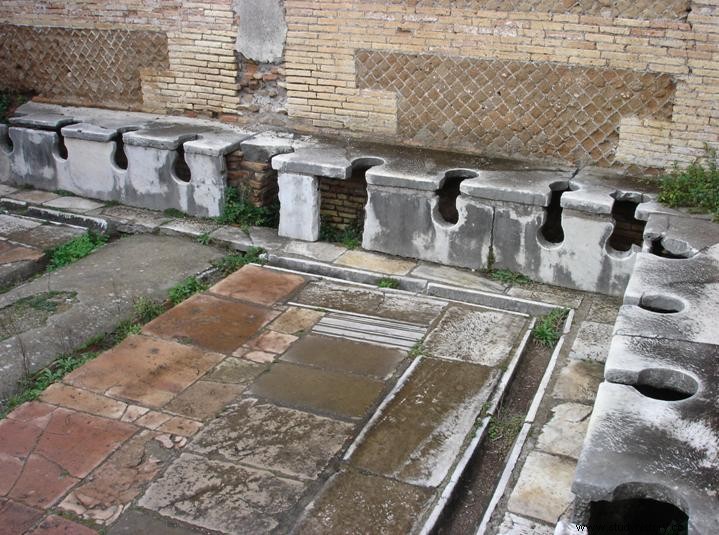The water that reached the city of Rome through the aqueducts was stored in large tanks from where it was distributed to bakeries, houses, bathrooms... The excess water from these priority uses ended up in the sewage network: the Cloaca Máxima . Its construction began in the 6th century BC. by King Tarquinius and enlarged several times in later centuries, it collected sewage from houses -logically, this network did not cover all of Rome, much less the areas of the lower classes- and from public latrines (latrinae publicae) to take them to the Tiber River. The problem was when the wastewater returned to its source... due to the flooding of the Tiber.

Dozens of public latrines were strategically distributed in the city of Rome (in the 4th century there were 144 with more than 4,000 places ) to meet the physiological needs of citizens. These latrines consisted of a cold marble bench with several holes in which to sit down to evacuate and under them the water current that carries the fecal matter. As toilet paper, in public latrines the Romans used a stick with a sea sponge (spongia) at one end. . And now that we have an idea of the interior, we will see the dangers of using them...
- As there was no separation between the holes, you had to share those moments of intimacy with strangers and I won't tell you anything if they were the ones who made conversation.
- In theory, after using the spongia it had to be rinsed and cleaned for the next one, and every so often changed. Sit down to relieve yourself and check that the spongia It should have been changed a long time ago...
- And the most dangerous for physical integrity... There was the funny habit of some hooligans of throwing a ball of burning wool into the sewers if they caught you with your ass in the hole...
And if the Romans used their art and talent in channeling, distributing and using water, they also did so when it came to recycling it. In the latrines that the high society had in their houses, the water used in the private baths for the toilets was recycled, and in not so wealthy houses, but which also had latrines, these were located near the kitchens to recycle the water. with which they washed the kitchen utensils.
Sources:Ancient Rome – Philip Matyszak, Science and Technology in the Ancient Roman World – Álvaro Vitores Glez.
